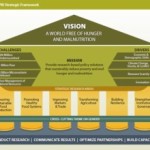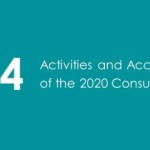Before government programs and international aid efforts, people coped with disasters, famine, conflicts, and other shocks by coming together as a community and relying on their networks—in other words, using social capital. Social capital, in the form of community-based organizations and social networks, has traditionally played an important, but largely unexplored, role in building resilience.
IFPRI researchers Quinn Bernier and Ruth Meinzen-Dick are changing that. In a recent 2020 Conference Brief, they take a closer look at these quiet support networks, note their benefits and limitations, and make the case that governments should understand and engage with them to improve the support they provide.
They first look at local organizations called iddirs in Ethiopia. These organizations help their members defray the costs of burial for their loved ones. Members meet regularly and contribute to the group. When a member dies, the iddir pays the family, helping them recover the costs of illness and burial—two key events that keep families in poverty. In many parts of the country, these organizations have expanded to provide even wider assistance, helping members recover from the loss of harvest or livestock, rebuild their houses, and even providing health insurance.
The researchers also examine the role of social networks in the Philippines, particularly links to migrant workers. Many families in the Philippines send a member to work outside the community. These new connections allow households to access a wide range of resources and knowledge to respond to and adapt to shocks. In addition, the remittances the migrants send home—and the social obligation to share resources within the family—serve as a safety net protecting against financial shocks.
However, each of these types of social capital has their limits. Community-based organizations such as iddirs can only help their members cope with one shock at a time. A severe, community-wide shock, such as a natural disaster, could easily overwhelm them. Also, they often only serve people in a certain religious group or geographic area, and they tend to be reactive, offering assistance after a crisis rather than building the community’s capacity to adapt and transform. Likewise, social networks are not a perfect tool for resilience. Families who depend on migrant workers to support them from afar may gain new connections and assistance but they lose productive workers at home, reducing livelihood options for those who stay behind. In addition, social networks can increase inequalities between those who are well-connected and those who aren’t, and can build a power dependency between “patrons” and “clients.”
The authors propose that, with the right policies and programs, governments can begin to fill these gaps. For example, in places like the Philippines, policymakers can provide incentives for families to use their remittances to contribute to community-wide activities, allowing remittances to complement—not replace—government and donor investments. Governments can also build on the work of local community-based organizations by establishing forums to improve the exchange of ideas and technologies between communities and outsiders.
Most importantly, the authors emphasize, policymakers implementing resilience-building interventions must understand and appreciate how social capital functions—who is included, who is excluded, and what information and resources are distributed. By recognizing the behind-the-scenes power of social capital, governments can ensure that their resilience programs are engaging and supporting them, not co-opting or diverting them from their original goal.





